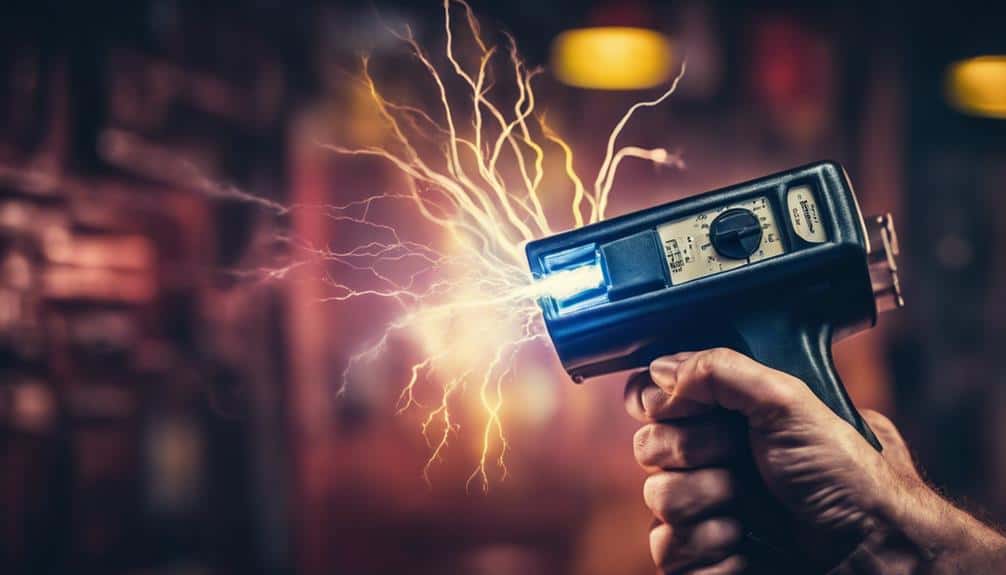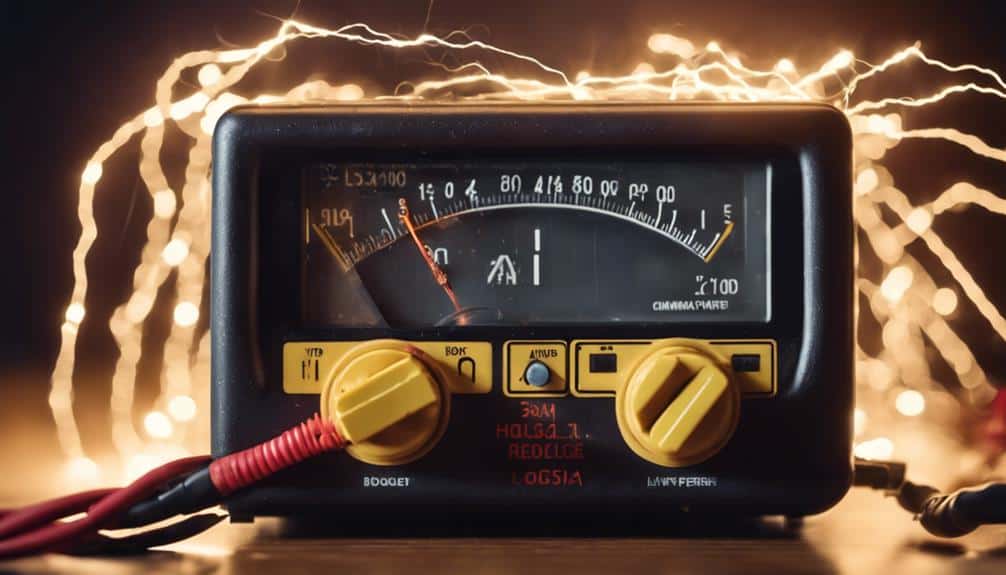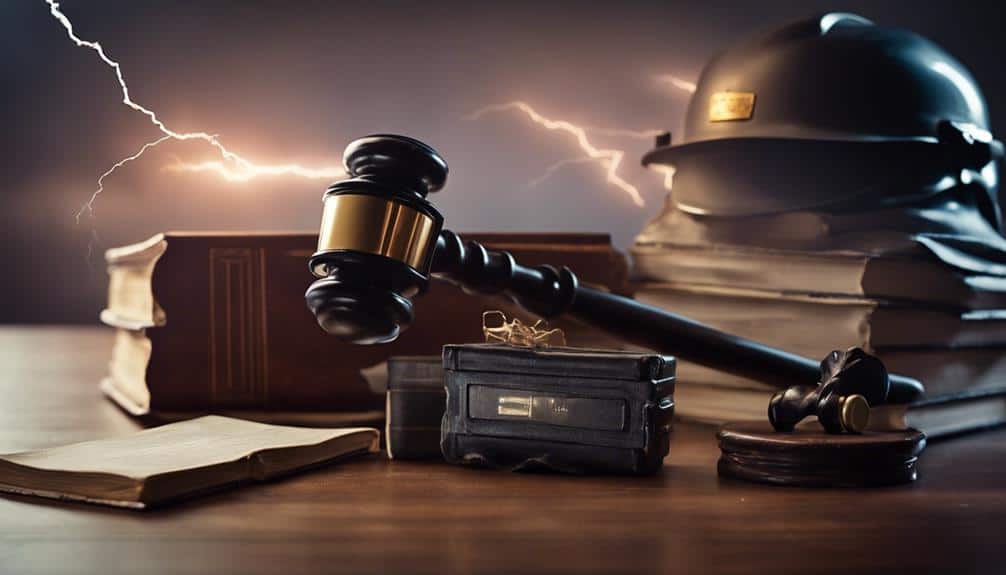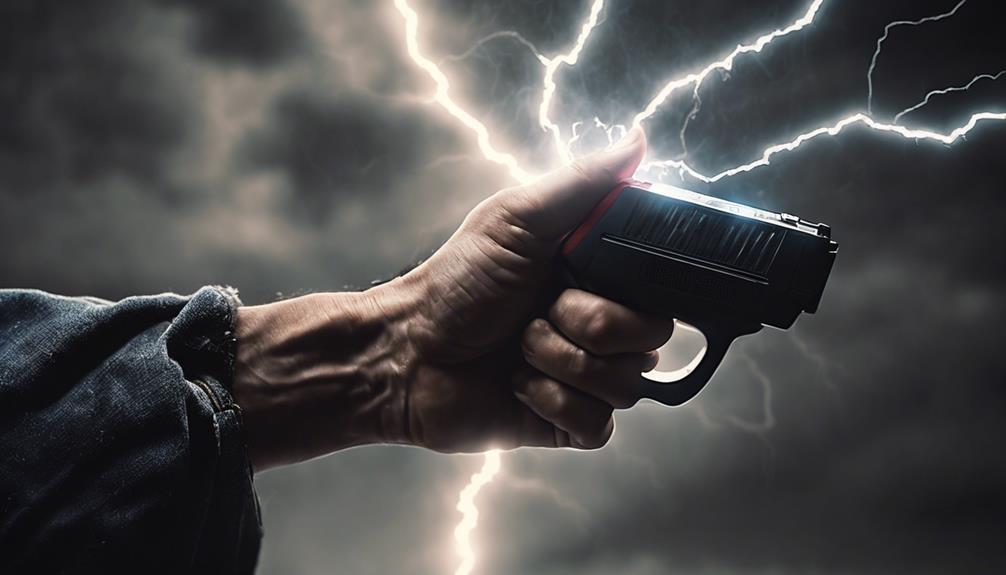As you wade into the sea of self-defense options, stun guns stand out as a beacon of security and a complex choice. Understanding stun gun voltage isn’t just about recognizing a high number; it’s about comprehending the balance between voltage and microcoulombs for effective use.
While voltage grabs headlines, the charge delivered—measured in microcoulombs—plays a pivotal role in penetrating clothing and incapacitating an attacker. You’ll want to watch how these factors interplay to select the ideal stun gun for your needs, especially when considering the nuances of safety and legal considerations.
What lies ahead is a guide that equips you with the knowledge to make an informed decision, ensuring you’re prepared, not just armed.
Key Takeaways
- Voltage and microcoulombs balance determines stun gun effectiveness, not voltage alone.
- Hand-held stun guns vary in voltage, typically between 50,000 to millions of volts.
- Safety and legality require adherence to guidelines and understanding of stun gun laws.
- The true strength of stun guns is measured by microcoulombs, with higher amounts indicating greater effectiveness.
Understanding Voltage

Voltage in stun guns is critical in determining the energy flow through the device. You might’ve heard terms like ‘Stun Gun Voltage’ thrown around when discussing personal safety devices. It’s important to understand how voltage functions in these tools. Essentially, the voltage is the force that drives electricity through the stun gun and into the target upon contact. The higher the voltage, the more intense the energy flow.
When we talk about ‘contacts spaced one centimeter apart,’ we’re referring to the physical points on a stun gun where the electrical current exits the device. This spacing is crucial because it directly impacts the maximum voltage the stun gun can safely emit. Scientific studies have pinpointed that 30,000 volts is the maximum voltage achievable at this distance without causing dielectric breakdown in air, which occurs at an electric field strength of 3 x 10^6 V/m.
Understanding the relationship between contact distance and maximum voltage is essential. If the contacts were spaced further apart, the stun gun would require a higher voltage to maintain effectiveness. Remember, these voltage limits are grounded in scientific research, ensuring the safety and efficacy of stun guns when used properly.
Voltage Vs. Effectiveness
When you want to understand how effective a stun gun can be, it’s not just about voltage but also the balance between voltage and microcoulombs. Voltage alone isn’t the key factor.
Instead, you need to consider microcoulombs, which measure the charge and play a crucial role in determining how well a stun gun can deter or incapacitate an attacker. Even a small amount of 1 µC of charge can cause intense pain, showing that higher microcoulombs can increase a stun gun’s effectiveness in self-defense situations.
However, the actual voltage delivered by a stun gun may be limited, affecting its overall performance. This is why stun guns with a higher power, combining high voltage and sufficient microcoulombs, are the best choice for optimal performance. They ensure that the stun gun isn’t intimidating due to its high voltage but is genuinely effective when needed.
In summary, while high voltage may catch your eye, the microcoulombs determine how well a stun gun will function in real-life situations. For those considering a stun gun for self-defense, it’s essential to grasp this balance. High voltage and a proper charge ensure you’re better prepared in crucial self-defense moments.
Measuring True Strength

To gauge a stun gun’s power, you must look beyond voltage and focus on measuring microcoulombs. This is because microcoulombs (charge) offer the true measurement of strength in stun gun devices, providing a more accurate indicator of their potential to cause intolerable pain and incapacitate an assailant.
Understanding the significance of microcoulombs in evaluating stun gun strength involves acknowledging several key points:
- Microcoulombs Determine Effectiveness: The amount of electrical charge measured in microcoulombs directly impacts the pain level and incapacitation a stun gun can inflict.
- Safety Measures: Despite higher voltage claims, the actual voltage across stun gun contact points is regulated to ensure the stun gun remains a non-lethal safety tool.
- Pain Threshold: A charge of 1 µC is enough to cause intolerable pain, making even a low-voltage stun gun based on this measurement highly effective.
- Police Stun Devices: Professional police stun devices often emphasize higher microcoulombs rather than higher voltage, highlighting their understanding of what truly contributes to a stun gun’s deterrent power.
Safety and Legal Considerations

Before purchasing or using a stun gun, it’s essential to be aware of the safety guidelines and legal regulations that apply. Stun guns are powerful self-defense tools, and their effectiveness partly depends on how well you understand and adhere to these aspects.
When considering stun gun voltage vs your safety needs, keep these points in mind:
- Follow Manufacturer Guidelines: Always use your stun gun as intended. This includes understanding the device’s features, such as the flashlight and battery strength, and properly using a stun gun with an LED for visibility.
- Stay Informed on Stun Gun State Laws: Regulations vary by location. Some areas may require permits to carry stun guns or prohibit them in places like schools. Shop SABRE Stun Guns only after confirming they’re legal in your area.
- Ensure Proper Training: Knowing how to use a stun gun, especially models like Stun Guns with a flashlight and belt holster, is essential. Seek training to ensure you can effectively use the device as a safety tool for personal protection.
- Test Regularly: Periodically check your stun gun’s functionality, including microcoulombs (charge) levels, to ensure it’s ready when needed.
Frequently Asked Questions
What Can 50,000+ Volts Do to a Person?
If you’re hit with 50,000 volts, you’ll experience severe pain, muscle contractions, and possibly panic. The shock can cause immediate disorientation and involuntary spasms, impacting your ability to move or think clearly in defensive scenarios.
What Is a High-Voltage (500,000+) Stun Gun?
A high-voltage stun gun exceeding 500,000 volts faces voltage misconceptions and requires understanding safety measures, legal implications, and usage guidelines. Key considerations include its battery life, design variations, market availability, historical development, technological advancements, and consumer feedback.
How Many Amps Is Sufficient?
You want a stun gun with at least 4 milliamps. You must understand ampere understanding and electrical principles to grasp its safety measures and legal considerations.
How Strong Is 1.6 Uc Stun Gun?
A 1.6 µC stun gun is strong enough for self-defense, causing pain and disorientation. Legal restrictions, safety measures, and carrying considerations must be considered. The gun is durable and widely available, and user testimonials confirm its effectiveness in various scenarios.


